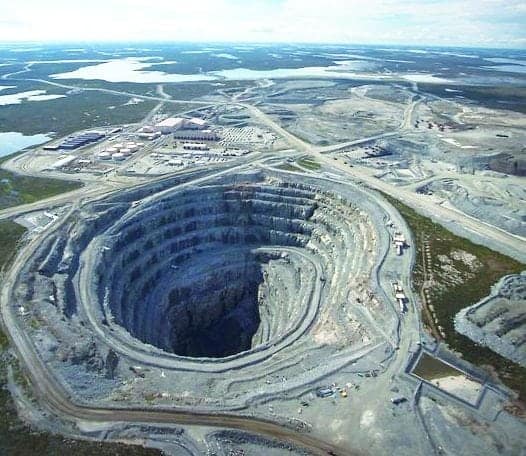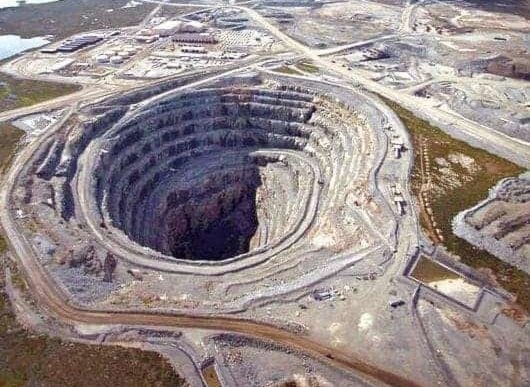The Covid-19 pandemic has wracked the Canadian economy but among the three territories the NWT will fare the worst in 2020, the Conference Board of Canada said in a report released on Thursday.
The NWT economy will shrink by 3.3 per cent this year, though economic growth is expected rebound to 3.9 per cent in 2021.
The economic contraction is driven by impacts from the Covid-19 pandemic which "will drag down the territory’s economy this year" and impact all sectors, with tourism-related industries like accommodations and food services being the hardest hit.
The downturn in mining is also affecting the negative outlook for the rest of the year, with Dominion Diamond Mines' suspension of its Ekati operation in March a major factor in that decline.

The GNWT's Department of Finance factored Ekati into its 2020-2021 budget additions, as the situation will impact its own-source revenues since fewer carbon, fuel and payroll taxes will be collected.
RELATED REPORTING: GNWT adds $65 million to 2020-2021 budget for Covid response, health expenditures
The loss of 1,200 jobs will this year cause the unemployment rate to spike at 13.5 per cent – the highest level on record.
The unemployment rate will then decline to 11.9 per cent as as most direct Covid-related job losses, nearly 900 of them, are recovered. But the report said the unemployment rate will remain at its highest level on record other than for 2020 because of the decline in diamond mining.
The employment rate will fall by 5.5 per cent this year, the board said, then rebound by 4.4 per cent in 2021.
Mining output is projected to drop 6.2 per cent this year and gain only 1.8 per cent in 2021, due to diamond production at the NWT's three mines of Ekati, Gahcho Kué, and Diavik
having already reached their peak and expected to fall in the coming years.
Ekati is projected to produce 1.9 million carats in 2020, down from the estimated 2.7 million from 2019.
Production will increase in 2021 but unless another ore source is developed the next few years will likely experience declines, the report said.
Gahcho Kué, owned by De Beers Group, recovered 6.8 million carats in 2019 and production is expected to be steady in 2020.
Production at the Diavik mine fell to about 6.7 million carats last year, and will fall lower to 6 million carats in 2020.
Commenting on the report, Tom Hoefer. Executive Director at NWT & Nunavut Chamber of Mines said the message of the Conference Board report is "old news."
"We haven't seen any significant actions over this time period to expect any changes. If anything, with Ekati currently closed and nobody exploring due to Covid, we are worse off."
Nunavut
The economy in the NWT's northeastern neighbour will grow 6.1 per cent this year and 13.2 per cent in 2021, "marking the territory's fifth and sixth consecutive years of economic growth above five per cent."
Employment is expected to fall 9.1 per cent this year but jump back by 4.1 per cent in 2021. The sharp drop is attributed to the expectation that many businesses in Nunavut will reopen slowly.
Though the pandemic will also hurt Nunavut's economic growth this year, its mining sector has already been strong and the effects of Covid will be limited. Mining output is forecast to rise 18.6 per cent this year.
Baffinland Iron’s Mary River mine can likely look forward to promising returns, after the federal government in 2018 approved the company’s application to increase its annual allowable shipments of iron ore from 4.2 million tonnes to 6.0 million tonnes through 2019. In March, the limit was extended until the end of 2021.
Yukon
Yukon will emerge the strongest this year among the territories, with its economy forecast to expand by 9 per cent in 2020 and by 7.7 per cent in 2021.
Increased mining production is a driver of its expected economic outcomes, with output due to more than double in 2020, and grow by 40 per cent in 2021. The Eagle Gold and Minto mines are expected to ramp up this year.
Though the Yukon has a lower unemployment rate than most other provinces and territories, it will rise to 5.7 per cent this year due to Covid-related job losses.
Tourism, arts, entertainment, recreation, accommodations and food sectors will face the most significant job losses, while the uptick in mining will add about 400 jobs.
